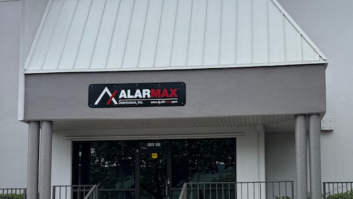Now that e-commerce has established a beachhead in CE retailing — bloody though it may be — pure-play and click-and-mortar merchants are using the current economic lull to consolidate their online creations.
For cyberspace-based stores like Amazon.com and 800.com, that means new acquisitions and alliances, like the latter’s recent buyout of Roxy.com, and a new $100 million marketing and technical support pact between Amazon and AOL.
For traditional retailers with e-commerce sites, it means reeling in their online offshoots to provide a seamless, multichannel offering to consumers in which brand stands above all else, regardless of the mode of purchase.
For those merchants, whose numbers include Wal-Mart, Kmart, Staples, RadioShack and CompUSA, the move represents a strategic about face from their initial e-tailing game plan, when e-commerce sites were created as far flung financial entities.
At the time, the reasoning seemed sound: Keeping Web sites at arm’s length allowed retailers to tap into the then flush capital markets, shielded them from earnings fallout from risky and expensive start-ups, and permitted their participation in possible IPO windfalls.
Establishing a separate e-commerce arm also allowed national or regional chains to sidestep the collection of taxes. Indeed, in testimony this month before the Senate Finance Committee, Wal-Mart’s VP/taxes David Bullington described how his company and others set up separate Internet subsidiaries to avoid having to collect taxes on online sales.
Moreover, separating the clicks from the bricks would free the cyber stores from the lumbering “Old Economy” ways of doing business, and allow them to take better advantage of the new and nimbler e-commerce paradigm.
“Wall Street had a lot to do with it,” observed George Coll, VP/e-commerce for CompUSA. “There was also a belief that a separate unit was much more agile, quicker to market and would provide more opportunities to leverage it in the marketplace.”
But now that the start-ups have borne the brunt of the dot-com learning curve — and paid the price in deflated valuations and a dearth of investment capital — parent companies are stepping back in. Earlier this month Kmart bought the outstanding 40 percent of its San Francisco-based online affiliate BlueLight LLC for about $15 million in cash, while Wal-Mart is acquiring the remaining minority interest in Walmart.com from its former venture capital partner.
“Clearly, customers today want to shop and seek information through both online and offline channels,” explained Wal-Mart president/CEO Lee Scott. “As a result, our focus areas … are tighter integration of our online program with our stores, developing additional services under the trusted Wal-Mart name that we can offer online, and continued development of our online shopping site.”
In announcing the BlueLight buyout, Kmart chairman/CEO Chuck Conaway concurred that the future of retail is “evolving into an integrated bricks and clicks model. Strategically, this acquisition … continues our focus on building a holistic approach in serving our customers in every aspect of their shopping experience.”
“Wal-Mart and Kmart are reeling in the line as fast as they can, and it’s proving to be the right answer,” said CompUSA’s Coll, whose first assignment as e-commerce VP was to fold the chain’s former Cozone.com offshoot into its corporate parent. “We realized that the biggest asset is a great brand and customer recognition. And that consumers would prefer to pay tax on a $1,000 computer knowing that there’s a store [to support their purchase] across the street. So we said, ‘Let’s retrench. Let’s build something that is part of CompUSA, not a separate appendage.”
Similarly, RadioShack is buying back Microsoft’s 25 percent preferred minority stake in RadioShack.com LLC for $88 million, while Staples was seeking shareholder approval of a $7 a share buyback this month of tracking stock Staples.com. “We believe that the multichannel aspect of the business is a very important aspect of what the consumer wants,” RadioShack president/COO Dave Edmondson told TWICE earlier this year. “It’s about whether or not we’re going to create the right kind of experience for the customer as we leverage the power of information in the Web across our entire business.”
A cornerstone of e-commerce integration is the in-store Web terminal, which helped catapult The Home Depot into the majap big leagues and is being rolled out by retailers at a furious pace. “Figuring out how to get our people to be super navigators from the floor is an important long-term objective for us,” acknowledged Edmondson. Added CompUSA’s Coll, “You can go online to CompUSA.com and order the entire superstore assortment, plus two or three times the quantity of accessories.” All of CompUSA’s 200-plus retail outlets should be wired by the holidays, he said.
All of this is old news for Circuit City, which was first among the major CE specialists to launch a fully functional e-commerce site, and which embraced a seamless, multichannel model from the get-go.
“We want to offer consumers a way to shop that is the way they want to shop,” said Dennis Bowman, Circuit City’s senior VP/chief information officer. “If they chose to shop online, we want them to have the same great experience as they would in stores. And since CircuitCity.com is a part of Circuit City, and not a separate company, it is completely integrated with our stores and our advertising. We believe that our web site is an important part of the Circuit City brand.”
To that end, CircuitCity.com is unique in offering shoppers real-time inventory status of merchandise within local stores. The site also provides 3-D rotating views of products, and permits online purchases to be picked up — or ordered via kiosk — at its brick-and-mortar locations.
Likewise, Best Buy looks upon its Web site as an extension of its brand franchise, rather than a unique channel of distribution. “The site is focused on building relationships, and its success is measured by more than clicks of the ‘Buy’ button,” the company said in a prepared statement for TWICE. “BestBuy.com is dedicated to educating consumers … [and it’s] goal is to make it easy to shop in whatever way is most convenient, online or in traditional stores.”
The latest addition to that channel-blurring strategy is a series of interactive learning courses that are available to consumers both in-store and on the site. The 90-plus courses offer instruction in such topics as Microsoft Office, basic navigation fundamentals of Internet use and Web site development, and provide some 20 tutorials on digital products sold by Best Buy.
Meanwhile, the contraction continues on the pure-play side as 800.com swallows Roxy and EverythingWireless, PC Connection acquires Outpost.com, and online liquidator Retail Exchange absorbs TradeOut.com.
“The consolidation phase is a little disorienting and frightening to some,” said 800 president and founder Greg Drew. “But it all comes back to sticking to the fundamentals of retailing.” So far, 800’s ability to stay the course amid the e-tail — and retail — rubble is beginning to bear fruit. “Year-to-year sales are where we want them to be, and our gross margins are still strong,” Drew said.
Still, the “P” word, profitability, remains elusive to all but a few in cyberspace (see eBay story, p. 14). Sears underscored the point at its annual meeting this spring when chairman/CEO Alan Lacy acknowledged that the company’s expansive e-commerce site is expected to lose money this year, but may break even in 2002. And despite pockets of profitability (most notably in its books, music and movies segment), and a projected date when it will finally stem the tide, Amazon, the granddaddy of all e-tailers, remains mired in red.
One of the stumbling blocks for e-commerce continues to be customer service. Despite all of e-tail’s technological innovations, many sites have yet to master the basic blocking and tackling of customer satisfaction. As BizRate.com, the online comparison shopping and e-tail rating service reports, three out of five barriers to repeat purchase intent are customer service related: late delivery, poor customer-support and no or poor order tracking.
Observed BizRate president/CEO Chuck Davis, “Nobody wants the presents to arrive the day after Christmas.”













